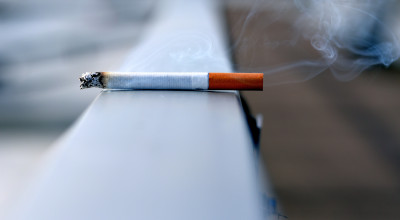NARCAN – What is It? Should You Carry It?
April 23rd, 2023
By P. Casey Arrillaga, LCSW, LCDC
Opioid overdoses are at an all-time high in the United States, and many result in death. According to the Center for Disease Control [CDC], opioid fatalities now run eight times as high as they did in 1999, and account for almost 75% of all drug overdose deaths. Given these numbers and the enormous personal, social, and financial costs that result, it is no surprise that professionals, first responders, and lay people are looking for anything they can do to stem the tide.
Enter NARCAN, the most well-known brand name for the life-saving drug naloxone. Naloxone works by effectively reversing opioid overdose if given in time. NARCAN is administered by spraying the drug into one nostril. It almost immediately blocks the opioid receptors in the brain, which stops the overdose in its tracks. NARCAN is so effective that the CDC has naloxone distribution as the number-one recommended strategy for communities to reduce overdose deaths and also recommends that anyone taking opiates, whether by prescription or not, keep NARCAN or another naloxone dose on hand at all times.
One of the reasons for promoting NARCAN specifically is that research shows that the brand-name version is easier to administer than generic naloxone. This is important because the average person who is not medically trained and doesn’t deal with overdoses regularly needs to have the easiest version at their fingertips if they encounter a life-and-death crisis. This is even more true if that crisis involves someone they love. The stress of such a situation is already enough without needing extra steps and instructions added to the equation.
There are many initiatives to train both medical personnel and non-medical citizens in the use of naloxone, particularly in areas in which opioid use is high. To go along with this, there are programs to distribute naloxone for free in such areas. As the opioid crisis deepens almost daily, such programs have become more popular.
Disagreement About Naloxone Distribution and Training
These initiatives are not without controversy. Much like needle-exchange efforts, the competing points of view largely come down to harm-reduction vs. behavior-reduction. A harm-reduction approach leads to education and giving out supplies. Behavior-reduction advocates often have concerns that harm-reduction efforts are tantamount to giving permission to engage in a negative behavior. Thus, behavior-reduction efforts leads to more time, energy, and money going to prevention. The harm-reduction advocates usually consider themselves more pragmatic, saying that people are going to engage in opioid use and so individuals and society should be ready to help. Behavior-reduction advocates think this is fatalistic and promotes bad behavior. Those that focus on behavior reduction often see opioid addiction as a moral failing and bad choice. Harm-reduction advocates usually see it as a medical condition that may result from forces outside of the user’s control, such as genetic vulnerability to addiction, social disparity, and childhood trauma. Both sides may claim the moral high ground, but there are no clear choices here. As a result, most areas end up with both harm-reduction and behavior-reduction efforts in play.
There are two points of view that are particularly illuminating in this debate: first responders (police, paramedics, firefighters), who are most likely to administer NARCAN, and opioid users, who are most likely to receive it.
First responders have a mixed response to carrying and giving NARCAN. In one study, police officers in Arizona were given a set of surveys before being trained in NARCAN use and then again after several months of carrying and administering it. They were found to have greater confidence to recognize opioid overdose and successfully give NARCAN to save lives after carrying it and using it for a while. The study’s authors confidently proclaim that lives will be saved as a result. Another author found that when there was less official scrutiny, such as in the comment sections on a first-responder website, first-responder attitudes could become much more negative and even hateful. This included comments that opioid users are scum and that they should be allowed to die to save emergency efforts for “those who really need them.” Accounts were given of opioid users who have a needle in one hand and a dose of NARCAN in the other, as though to say, “Save me from my own behavior.” Even in the mainstream press, law enforcement officials have said they will not have officers carry NARCAN because they are only condoning opioid abuse by taking away the natural consequences.
The perspective of chronic opioid users is similarly enlightening. In a paper based on interviews with heavy opiate users, it was found that all of them were familiar with NARCAN by brand name but not necessarily naloxone as a generic term. They all had a positive view of NARCAN and had seen it save lives, and many had had it used on them. They universally said it was a terrible experience physically because it felt like being thrust into the worst withdrawals. They all said they would hate to go through that again but hoped that if they were overdosing, someone would use it on them anyway. Several said they had used it to save others but were cautious about carrying it because of potential stigma and being reluctant to “ruin someone’s high.” Some said they were more cautious in their opioid use afterward, but one had used immediately afterwards to avoid the withdrawal effects, which caused them to think poorly of themselves. While many had gone back to using opiates again, they all denied that NARCAN availability played any role in that.
The Bottom Line
NARCAN saves lives. No matter which side of the controversy, everyone agrees with that fact. Carrying it and getting training on how to use it properly is a matter of personal choice that seems largely influenced by attitudes about the causes of opioid abuse and the morality of that behavior. If you decide you want to get training and supplies, naloxone is available in all 50 states through pharmacies, mail, and harm-reduction centers.
About The Author
P. Casey Arrillaga is the Team Leader for Education at Windmill Wellness Ranch, and he is the author of books including “Realistic Hope: The Family Survival Guide for Facing Alcoholism and Other Addictions”. His books, podcast, videos, etc. can be found at CaseyAuthor.com


